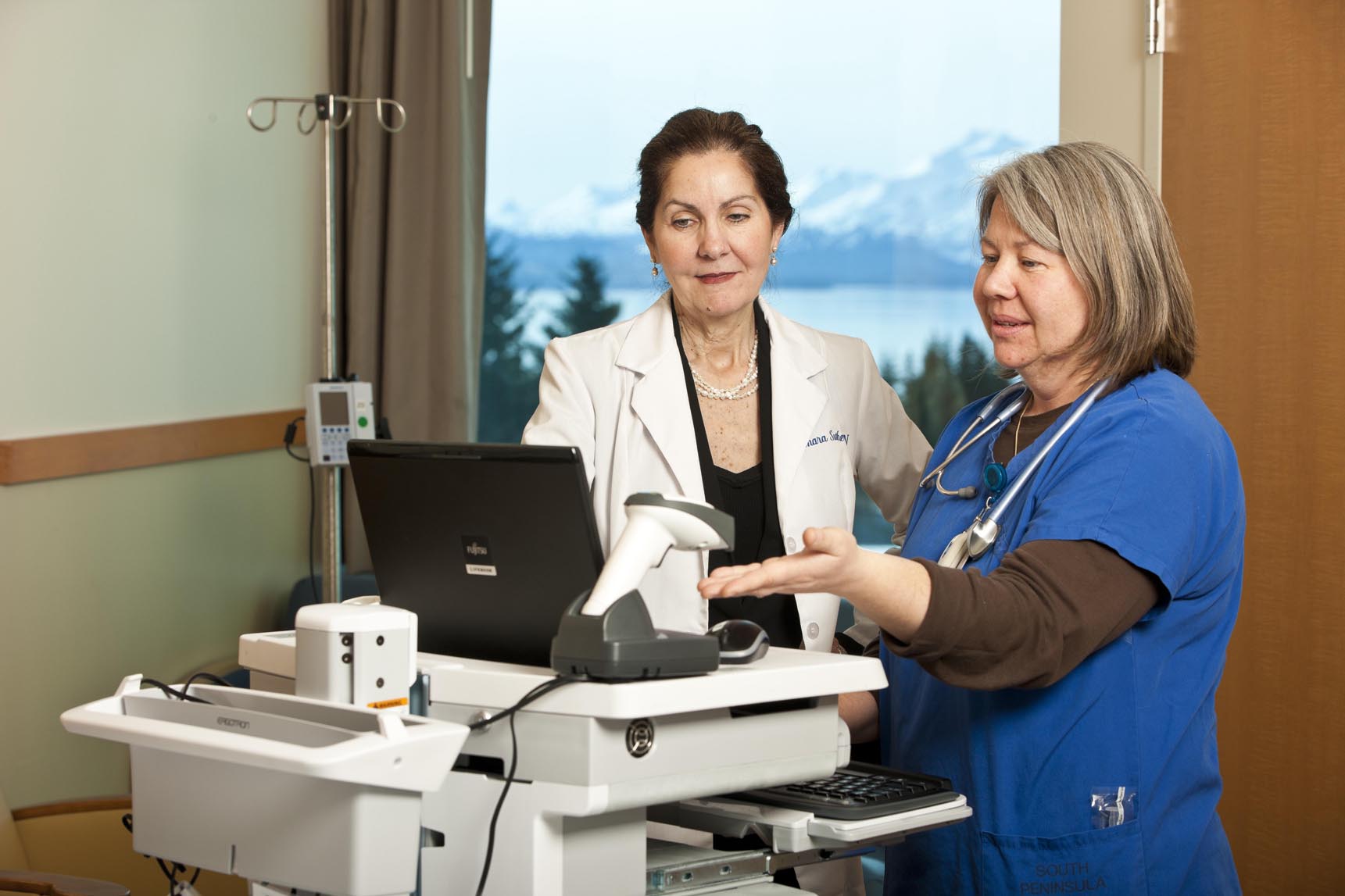As members of the baby-boom generation age into Medicare at 65, for those inspired to care for the elderly, Alaska’s health-care industry will blossom like no other with good-paying, long-lasting jobs, according to analysis of industry growth patterns by state Labor Department economists.
By 2020, growth in all Alaska industries will have added nearly 39,000 new jobs since 2010, almost 13,000 of them in public and private health care and social assistance, say economists Paul Martz and Todd Mosher, writing in the latest issue of Alaska Economic Trends, a monthly magazine produced by the Department of Labor and Workforce Development.
In addition, thousands more existing positions will be vacated as current workers retire, they said.
That demand squares with what South Peninsula Hospital CEO Bob Letson sees on the southern Kenai Peninsula.
“Baby-boomers are hitting Medicare,” Letson said. “That will mean more hospitalizations and long-term care; rising populations in hospital and nursing home censuses.”
South Peninsula Hospital already faces shortages in some key jobs that take time to fill, he added.
“If the current trends continue, that’s only going to get worse,” he said.
Martz and Mosher say that by 2020 Alaska’s population over 65 will have grown 89 percent compared to 2010. The number of Alaskans between the ages of 65 and 79 will nearly double, while those over 80 will grow by 46 percent, driving the rapidly growing demand for health care and associated services.
Evaluating long-term employment trends and other data, the state economists arrived at general forecasts for growth within the health-care industry, including predictions that the need for personal care aides and home health aides would grow by 40 percent and 37.7 percent respectively.
Opportunities in other health-care professions also are expected to grow, such as respiratory therapists (33.3 percent), diagnostic medical sonographers (33.3 percent), medical assistants (31.9 percent), radiological technologists (30.9 percent), family and general practitioners (29.3 percent) and registered nurses (27.7 percent), to name a few.
“Of the 50 highest-growth occupations, 47 are health care-related,” Mosher wrote.
Martz said the state is working on a joint study with the University of Alaska due out in January that is focusing on job vacancies by occupation that also may include data on turnover. Results should help state statisticians better quantify demand, he said.
The demand in the health care industry could be good news for Homer’s younger workers and those just entering college. For one thing, Letson commented, the Kachemak Bay Branch of Kenai Peninsula College offers programs to ready students for employment in the health care industry, and access to others through KPC and the University of Alaska.
Of particular concern is the shortage of registered nurses trained in obstetrics,” Letson said, adding, “There is a need for replacement RNs to take the place of those who are retiring.”
In 2009, the American Academy of Nurse Practitioners found that the average age for nurse practitioners in obstetrics was 49. Letson said important positions are turning over every year and replacements are needed. “It’s definitely a good career path,” he said.
South Peninsula Hospital always needs pharmacists. Over the past two or three years, Letson said, the hospital has been at least a pharmacist short. There are also shortages of primary care physicians, Letson added, and a need for more midwives, physical therapist and assistants, and laboratory and X-ray technicians. With federal law requiring hospitals to use electronic health records by 2014, medically trained employees will also need to be IT-trained as well.
“Medical record coding systems are changing and becoming more complex,” Letson said. Thus, there will be an increasing number of jobs in medical transcription, medical records-keeping, data analysis and other technical positions beyond those directly servicing patients, he said.
While other Alaska industries may struggle to predict and prepare for changes in the economy, medical care facilities will always be in demand.
“There will always be hospitals,” Letson said, as well as nursing homes, assisted living centers, home health services and physicians clinics.


